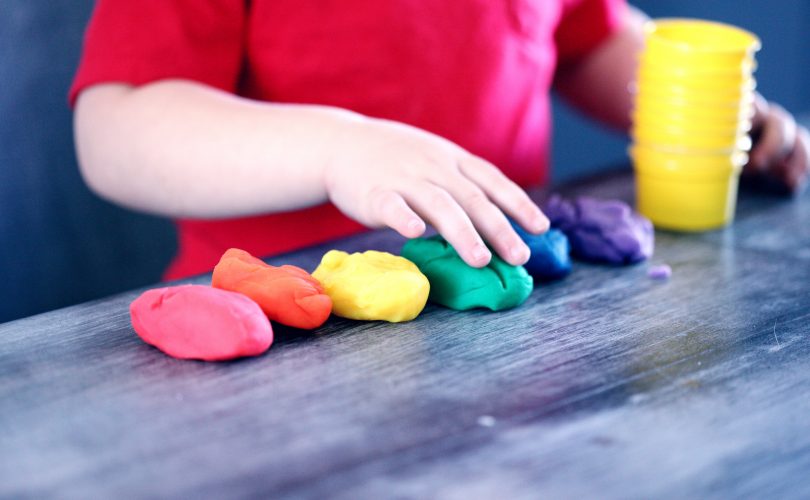Once you understand the sensory system, and how it can present behaviorally, it is important to choose the proper tools to build your child’s tool kit. This “tool kit” is also known as a Sensory Diet. It is sensory input that is incorporated throughout a day to regulate th犀利士 e child and fulfill their sensory need犀利士 s. Every sensory diet is different because every child is different, an犀利士 d no two children with autism present the same. Your child’s sensory diet should be advised and developed in collaboration with your child’s occupational therapist. Occupational therapists receive extensive training on the sensory system and can be a great resource to help you and your child manage his or her sensory system. The following sections will list some example activities for your child depending on if he or she is sensitive to input or requires extra sensory input.
Tactile sensory input (deep pressure and touch):
- Give hugs!
- Swaddle your child
- Give squishes under an exercise ball or with cushions from a couch
- Give a massage
- Wilbarger brush protocol
- Squeezing a stress ball
- Pet a dog or cat
- Move rocks or coins in pocket with your hand
- Rub lotion on body
- Brush or twist hair
Oral sensory input:
- Blow bubbles
- Blow cotton balls (you can even make it a race!)
- Suck or blow through a straw
- Chewing gum
- A necklace with a child chewy toy
- Use a vibrating toothbrush around and inside the mouth
- Drinking cold water
Vestibular sensory input:
- Swinging
- Sitting and bouncing on a ball (can also play a game or do other exercises while seated on the ball)
- Lay on stomach over a ball and walk hands out (feet should be off of the ground)
- Dancing
- Running up and down steps
Proprioceptive input and movement
- Walk over pillows, blankets and mattress
- Create and complete an obstacle course
- Jumping on a trampoline or mattress
- Roll dough
- Wheelbarrow walking
Auditory sensory input:
- Calm music in the evening, such as classical or instrumental music
- Upbeat songs in the morning or day time if appearing drowsy
Visual sensory input:
- Dim light in the evening to prepare for sleep, such as a bedside lamp
- Calming visual stimuli in the evening, such as stars on the ceiling or colored lantern
- Bright lighting to alert a child in an activity
- Visually stimulating rooms could be alerting for some children (and distracting for others)
Smell sensory input:
- Essential oils (lavender, chamomile or vanilla are calming while peppermint and citrus are alerting)
“Heavy work” is considered great sensory input to either calm or alert a child. Consider these options:
- Have your child carry a basket of laundry or weighted items across a room
- Have your child help carry bags of groceries into the house
- Have your child place heavy items into cabinets or the refrigerator (such as bottles, cans etc.)
- Wipe the tables after meals
- Move furniture or a heavy blanket across the room and back (push, pull, or carry)
- If in public, have your child push the grocery cart or a stroller
There are many, many more potential tools for creating your child’s sensory diet犀利士5mg . It is important to note that all of these activities should be accompanied under the supervision of a parent or adult. These are general suggestions for activities to complete at home or when, but it is best to consult your child’s occupational therapist to determine the best tools for your child at different times of the day. Collaborate with your child’s occupational therapist to explore, choose, and develop the components of your child’s sensory tool kit.
Article written by: Ani Bournazian MS, OTR/L








You have noted very interesting details ! ps decent website. Lianne Rawley Azaleah
I am delighted that I noticed this website , exactly the right info that I was looking for! . Marcia Norton Sorilda